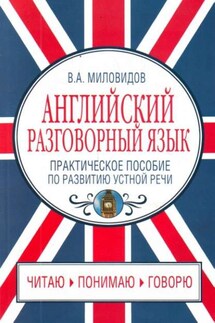Английский разговорный язык. Практическое пособие по развитию устной речи - страница 18
– не поддающийся контролю
lose touch – утратить связь
Exercise 8
Answer the questions:
1. What does one have to do in order to understand why Marxism inspired revolutions?
2. What theory is the core of Marxian economics?
3. How can the value of a commodity be measured, according to Capital?
4. What economic theories was Marxism based on?
5. How was the labour power value calculated?
6. How can a capitalist make a worker produce the «surplus value»?
7. What idea makes the key issue of Marxist historical concept?
8. How can free market block workers' creativity?
9. What is the Marxian way to democratic society?
10. What is the main law of history, in Marxists' opinion?
Marxists on the Parade
At last Mayday parade in the Soviet Union, after the tanks and the troops and the planes and the missiles rolled by there came ten men dressed in black.
«Are they Spies?» asked Gorby.
«They are Marxist economists,» replies the KGB director, «imagine the havoc they will wreak when we set them loose on the Americans.»
havoc – опустошение, разрушение
missile – ракета
spy – шпион
troop – полк, воинское соединение
wreak – производить, изливать
roll by – проезжать
set loose on – выпускать (на)
Gorby – сокр. от Gorbatchev – Горбачев
Neoclassical Economics
Neoclassical economics is the mainstream economics today.
In the nineteenth century, most Western economists accepted what is now called classical theories of value and distribution. According to the classical value theory the value of a watch, for example, depended on the costs involved in producing that watch. The aggregate product of an economy was supposed to be distributed among different people or different social groups according to the costs borne by those people and groups in producing this product. This classical views had their roots in the ideas of Adam Smith, David Ricardo, John Stuart Mill and Karl Marx.
In practice these theories did not always work, and it was noticed that prices in the market did not necessarily reflect the value so described, as people were often ready to pay more than an object was supposed to cost. So, the classical theory of value, according to which value was a property of an product, was gradually substituted by theories in which value was reflecting the relationship between the product and the person purchasing the product. This two-fold relationship later came to be called supply and demand. This was a real breakthrough, and it is known now as the Marginal Revolution in economics. The theories which developed from these ideas later came to be called neoclassical economics.
The framework of the Marginal Revolution and the neoclassical economics is as follows. Individuals, both buyers and producers, make choices at the margin. Buyers tend to maximize their gains from getting goods up to a certain point where what they gain from an extra unit is balanced by what they give up to obtain it. Thus they maximize and optimize «utility» – the satisfaction which they get while consuming goods and services. In the same way workers provide labour to employers by balancing the gains from offering the marginal unit of their services (the wage they are supposed to get) with the the loss of leisure.
In the same way producers maximize profits by balancing the revenue they generate with the cost of producing the marginal units of a product. They also hire workers up to the point where the cost of additional hands is balanced by the value of output that those hands might manufacture.


